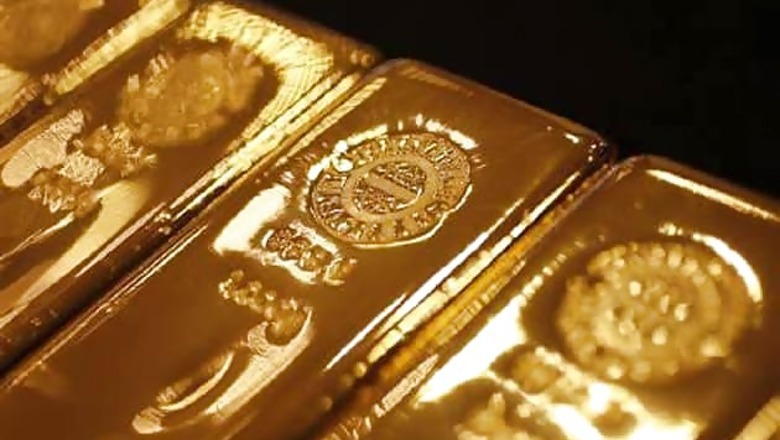
views
Launceston: With gold demand slumping to the lowest in four years in the second quarter, bulls are grasping to hold on to anything positive and right now that means India and China.
According to the World Gold Council's (WGC) quarterly report, the demand for gold in the world's top two consumers has surged. India regained its lead over China by buying 310 tonnes in the second quarter, up 71 percent from the same period in 2012 and 21 percent above first quarter purchases.
China bought 275.7 tonnes in the second quarter, a jump of 87 percent from the same period last year, but 6 percent below the first quarter's demand.
But even the strong demand in the Asian giants wasn't enough to offset the dramatic outflows from exchange-traded funds (ETFs), which saw 402.2 tonnes of sales, more than double the 176.5 tonnes that flowed out in the first quarter.
This meant that total gold demand was 856.3 tonnes, a drop of 12 percent from the same quarter of last year and the lowest three-month total in four years. The WGC report shows why gold plummeted in the second quarter, with the spot price plunging more than 25 percent from a closing price of $1,584.70 an ounce on April 9 to a three-year low of $1,180.71 on June 28.
While there has been a recovery since then to the current price of around $1,368 an ounce, there remain risks to saying prices will recover further on the back of Indian and Chinese buying. Firstly, one has to assume that gold ETF outflows will diminish, and while it's true that the net selling has slowed from the pace of the first half, it looks like the third quarter will produce another negative number.
Another bearish factor is slowing central bank purchases. These were still positive at 71.1 tonnes in the second quarter, but this was the lowest in two years and about half the rate of buying in 2012.
However, if one assumes that between them ETF flows and central bank purchases will be more or less neutral, the driver of the gold market really becomes India and China.
The WGC believes that demand in India could reach a record 1,000 tonnes this year, and given that it was 566.5 tonnes for the first half, this doesn't seem unreasonable, especially with the upcoming festival and marriage season.
However, the Indian government wants to limit gold imports to no more than 850 tonnes, and has once again taken steps to try to crimp buying. These include raising the import tax to a record 10 percent, banning imports of coins and medallions, making buyers pay cash and stipulating that 20 percent of all imports must be used for exports, usually as jewellery.
In common with the WGC, many Indian gold traders believe demand remains resilient, even in the face of government measures. But what the market may be missing is that the government seems quite determined to rein in the current account deficit, and given that gold is the second-biggest import by value behind crude oil, it's an obvious target.
The likelihood must be that the government will keep imposing measures until it gets the desired result. Imports reached a monthly record of 162 tonnes in May as Indian buyers took advantage of the slump in prices.
This prompted an increase in the import tax to 8 percent, and imports fell to 31 tonnes in June. A revival to 47.6 tonnes in July has now led to another rise in the import tax and other measures.
If the Indian government does keep raising taxes and taking other steps, then it's hard to make a case that the nation's imports will keep growing, or at least its legal imports at any rate as the new taxes may well encourage smuggling.
China also appears to be on track for gold demand of 1,000 tonnes this year, with first half purchases at 570 tonnes, putting it just ahead of India, which up to the end of last year was the world's top buyer.
The sharply lower price, concern about economic growth, and worries about the performance of alternative investments such as property and equities have helped stir Chinese demand for gold. But gold traders also report that Chinese buyers stocked up in the second quarter as the price plunged, so they may be holding enough inventory and this may crimp second-half purchases.
If the economy does start to pick up, and there have been some initial signs of this, it may also tempt investors to look elsewhere, especially if gold prices remain relatively stable. Nonetheless, China looks a far better bet than India on gold demand, but it remains doubtful that even if the bullish predictions for the two Asian nations are correct that they would be enough to spark a renewed gold rally.
It's taken way too long for gold bulls to realise that the yellow metal's rally to its record high of $1,920.30 an ounce in September 2011 was the combination of three factors, and it's unlikely that all three will work together again.
Demand from Western investors fearing inflation and monetary debasement, buying from developing world central banks and strong consumer demand in China and India sparked the record. Since then, at best, two of the three factors have been at work at any given moment, and currently only demand from China and India is evident.




















Comments
0 comment